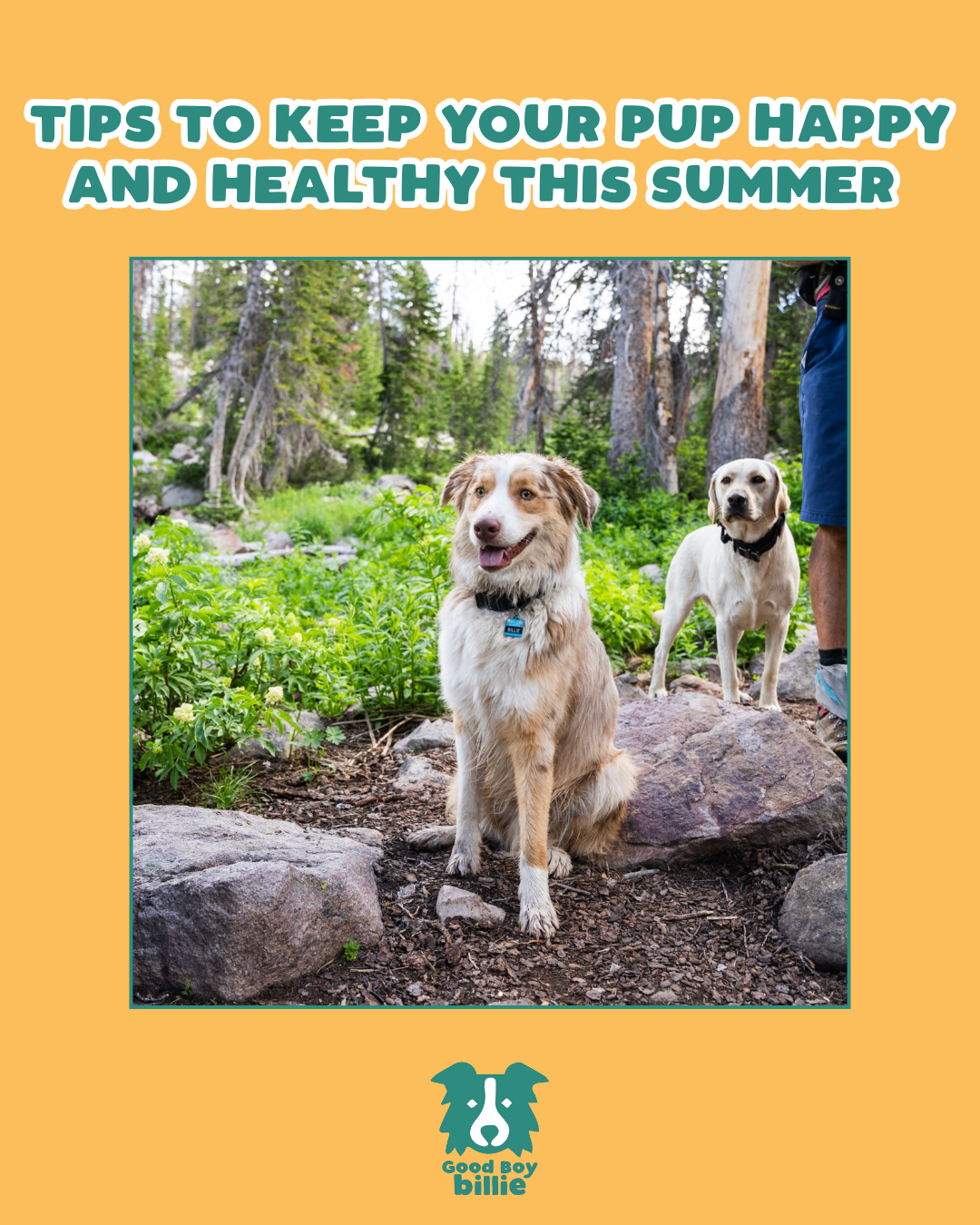
5 Tips to Keep Your Pup Happy and Healthy This Summer
Share
Summer is the perfect time for adventure, sunshine, and quality time outdoors with your pup—but rising temps and seasonal risks mean it’s also a time to be extra mindful of your dog’s safety. Whether you're hiking, road tripping, or just hanging in the backyard, here are five essential summer care tips to help your dog stay happy, healthy, and tail-wagging all season long.
1. Prevent Overheating
Dogs can easily overheat in the summer heat—especially breeds with thick coats, flat faces, or extra energy to burn. Keep these tips in mind:
- Limit exercise on hot days
- Opt for walks in the early morning or evening, when temperatures are lower
- Never leave your dog in a parked car
If you’re unsure whether it’s too hot for outdoor play, stay on the side of caution—dogs can overheat much faster than humans. Even a short time in high heat can lead to heatstroke, especially for pups with thick coats or short snouts. When temperatures rise, it’s best to limit activity, stick to shaded areas, and always give your pup plenty of breaks. When in doubt, keep the fun indoors where it’s cool and safe.

Know the Signs of Heatstroke
Even with precautions, heatstroke can sneak up on pups quickly. Keep an eye out for warning signs like:
- Excessive panting or drooling
- Vomiting
- Lethargy or low energy
- Weakness or stumbling
If you notice signs of heatstroke—like excessive panting, drooling, vomiting, weakness, or lethargy—it’s important to act quickly. Move your pup to a shaded or air-conditioned space immediately and offer cool (not cold) water in small amounts. You can also use cool, damp towels on their paws, belly, and armpits to help bring their body temperature down.
If you notice signs of heatstroke—like excessive panting, drooling, vomiting, weakness, or lethargy—it’s important to act quickly. Move your pup to a shaded or air-conditioned space immediately and offer cool (not cold) water in small amounts. You can also use cool, damp towels on their paws, belly, and armpits to help bring their body temperature down.

2. Hydration Is Key
Just like us, dogs need extra water in hot weather to stay hydrated and safe.
- Always have fresh water available
- Bring a portable bowl on hikes and walks
- Remember: heat = higher water needs
A hydrated pup is a happy (and healthy) pup! Dogs lose moisture quickly during the summer—especially when they’re panting to cool down—so it’s crucial to make sure they’re drinking enough water throughout the day.
Always provide access to clean, fresh water, both at home and on the go. Bring a portable water bowl or collapsible dish during walks, hikes, or outdoor adventures.
In hot weather, your dog may need up to twice as much water as usual, especially after physical activity.
Signs of dehydration can include dry gums, lethargy, sunken eyes, and sticky saliva. If you notice any of these, encourage your pup to drink and contact your vet if symptoms don’t improve.

3. Protect Those Paws
Hot pavement can burn your dog’s paw pads before you even realize it. A good rule of thumb?
- If it’s too hot for your hand, it’s too hot for their paws
- Stick to grassy paths or shaded trails
- Use dog booties for extra protection when needed
Hot pavement can reach dangerous temperatures quickly—even on mild days—and it can burn your dog’s paw pads in just seconds. Always check the ground before heading out: place the back of your hand on the pavement for 7 seconds. If it’s too hot for your hand, it’s too hot for your dog’s paws. To stay safe, opt for grassy areas, shaded trails, or protect those paws with dog booties on especially warm days.

4. Watch Out for Wildlife
Warmer weather means more critters are out and about—and some can pose real threats to your dog’s safety.
- Warm weather = more critters outside
- Stay alert for snakes, skunks, porcupines, mountain lions, and even moose in rural areas
- Avoid overgrown trails where visibility is limited
- Keep your dog leashed in unfamiliar areas
Wildlife encounters can turn dangerous in seconds, especially during the summer when more animals are active. Depending on where you live or hike, your pup could cross paths with snakes, skunks, porcupines, coyotes, or even larger animals like mountain lions, bears, or moose.
When it comes to wildlife, it’s better to be cautious than caught off guard.

5. Watch Out for Foxtails and Burrs
- Foxtails and other spiky plants can lodge in your pup's ears, noses, and paws
- Always check your pup after playing outside
- Monitor for signs of discomfort like paw licking, head shaking, sneezing, or swelling.
After any outdoor adventure—especially in grassy fields, trails, or dry brush—it’s essential to give your dog a full-body check for foxtails, burrs, and other plant debris. These spiky seeds may seem harmless, but they can cause serious injuries if left unnoticed.

Final Thoughts
Summer is one of the best seasons to make memories with your pup—from sunny strolls to backyard hangouts and weekend hikes. But with the fun comes a little extra responsibility. By staying mindful of the heat, keeping your dog hydrated, and checking for seasonal hazards like foxtails or wildlife, you’re making sure your furry best friend stays safe, healthy, and full of tail wags.
A little prep goes a long way—so pack that water bowl, plan for shade, and get ready for some PAWsome summer adventures!
—
P.S. Don’t forget to check out the Good Boy Billie Shop for Dog Dad hats, stickers, and gear made just for dog people like you

